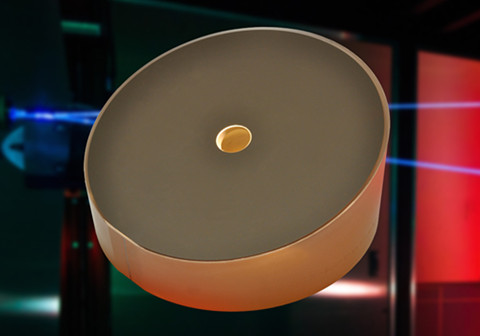Home > News > Improving the Lifetime and Performance of High-power Laser Mirrors
Improving the Lifetime and Performance of High-power Laser Mirrors
- Optical Surfaces Ltd reports how its proprietary smoothing techniques largely eliminate surface microcrack damage from the off-axis parabolic mirrors it produces for high-power laser applications. As a result, the achievable performance and operational lifetime of these critical focusing mirrors is enhanced.
Surface microcracks introduced during machining processes such as grinding, can reduce the glass's intrinsic strength by creating stress concentration points. These defects not only compromise the optical element's structural strength and lifetime but also increase stray light thereby reducing the achievable focusing resolution of parabolic mirrors used in high power laser applications.

Off-axis parabolic mirrors for high-power laser applications (courtesy: Optical Surfaces Ltd.)
Benefiting from a highly stable production facility based deep inside a chalk cliff, Optical Surfaces skilled engineering team are world renowned for producing off-axis parabolic mirrors with surface accuracy, surface microroughness and surface slope errors at the limit of what is possible.
Dr Aris Kouris of Optical Surfaces said “Few companies in the world can produce off-axis parabolic mirrors of sufficient quality to enable Petawatt and Zettawatt lasers to focus their massive energy down onto targets only a few microns in size. Our ability to routinely produce ultra smooth parabolic mirrors not only helps research group advance the boundaries of what is experimentally possible but also extends the mirrors operational lifetime.”
Off-axis parabolic mirrors provide an unobstructed aperture and access to the focal plane. In addition, due to their completely achromatic performance, they are especially suitable for broadband or multiple wavelength laser applications. Many optical and system designers favour off-axis parabolic mirrors as they often provide the most cost-effective answer without any compromise in performance and present the ideal solution to many high-power laser applications.
For further information please visit https://optisurf.com/off-axis-paraboloids/ or contact Optical Surfaces Ltd. on +44-208-668-6126 / sales@optisurf.com.
Optical Surfaces Ltd has been producing high precision optical components and systems for more than 60 years. The company’s ISO 9001-2015 approved manufacturing workshops and test facilities are deep underground in a series of tunnels excavated in solid chalk where temperature remains constant, and vibration is practically non-existent. With such stable conditions testing, particularly with long path lengths, becomes quantifiable and reliable.
-----------
Worldwide HQ
Optical Surfaces Ltd.
Godstone Road
Kenley
Surrey CR8 5AA
UK
Tel. +44-208-668-6126
email sales@optisurf.com
web http://www.optisurf.com
Related News
- Cutting-edge Product for Stem Cell Research and Human Embryo Modelling 12/4/2025
- Thermo Fisher Scientific Launches Industry-First, Multi-Parameter Molecular Assa 11/20/2025
- Biotech Fluidics: Solvent Recyclers Improve HPLC System Sustainability 11/20/2025
- Titan Enterprises’ Beverage Flow Meters: Turbine vs. Ultrasonic – Which is Right 11/19/2025
- Gentle and Rapid Detachment of Even Delicate Adherent Cells 11/18/2025
- Simplifying Beam Diagnostics with a Laser Beam Reducer 11/18/2025
- Radiation Tolerant Lenses for Nuclear Monitoring Systems 11/14/2025
- SI Sensors: Lower Cost Custom CMOS Image Sensors 11/13/2025
- EpiCypher Launches Fiber-seq Kit to Democratize Single-Molecule Chromatin Mappin 11/12/2025
- Waters Announced the Launch of its Charged Aerosol Detector (CAD) 11/11/2025


